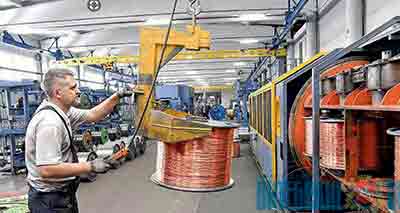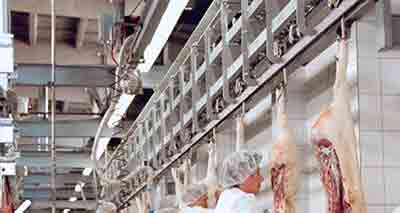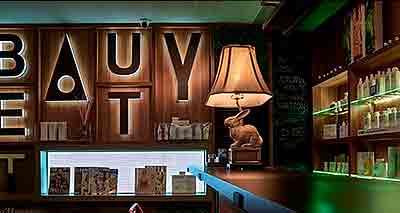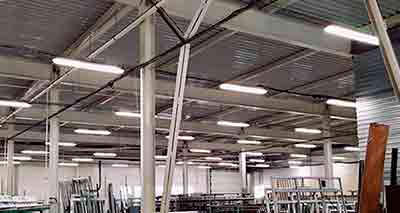Content
As a result, the variable cost per unit would be $2 ($20,000/10,000 units). While the direct costs of labor and materials are usually easy to calculate based on production volumes, variable overhead costs are not so easy. Variable manufacturing costs vary roughly with changes in production volumes. Variable overhead spending variance is unfavorable if the actual costs are higher than the budgeted costs.
On the other hand, if the actual variable overhead rate is higher, the variance is unfavorable. This means that the actual variable overhead cost during the period is higher than the overhead cost that is applied to the actual hours worked using the standard variable overhead rate. For example, the company ABC, which is a manufacturing company, incurs $11,000 of variable overhead costs with 480 direct labor hours of works during September. The company ABC has the standard variable overhead rate of $20 per direct labor hour.
Discount on purchase of indirect materials and supplies because of large order sizes. The overall operational costs usually include the salaries of managers, sales staff, and marketing staff who are part of the production facilities. Required to manufacture a certain number of a product and the budgeted or standard number of hours. The difference can be significant and needs to be monitored and managed. A relevant cost is a cost that only relates to a specific management decision, and which will change in the future as a result of that decision. However, the cost of corporate overhead is not a relevant cost, since it will not change as a result of this decision.
How To Evaluate A Company’s Balance Sheet
This variance is unfavorable for Jerry’s Ice Cream because actual costs of $100,000 are higher than expected costs of $94,500. Economies of scale gained from spreading overhead costs over a larger production volume. Multiply the actual sales price by the number of units sold to find the total actual revenue. For example, if the company built 300 widgets and sold them at $85 each, multiply 300 by $85 to find the actual revenue equals $25,500.
To calculate manufacturing overhead, you have to identify all the overhead expenses . Sometimes these are obvious, such as office rent, but sometimes, you may have to dig deeper into your monthly expense reports to understand what’s happening. There’s a fairly simple calculation you can use to determine your business’s manufacturing overhead rate. Let’s say your business has a total overhead cost of $20,000 per month and a total labor cost of $5,000 per month. The sum of all your recurring monthly expenses makes up your overhead costs.
If the budget allowance based on actual hours worked is less than the budget allowance based on standard hours allowed, a favorable variable overhead efficiency variance occurs. It can be subdivided into VOH expenditure variance, and VOH efficiency variance. VOH expenditure variance is the difference between the standard variable overheads for the actual hours worked, and the actual variable overheads incurred. To calculate overhead efficiency variance, subtract the budgeted labor hours from the actual hours expended and multiply by the standard overhead rate per hour.
This list shows the expected cost of running the business given various levels of production. Since variable overhead rates contribute to higher costs when production is high, a higher volume of sales doesn’t translate into a direct rise in profits. Predetermined variable overhead rates are https://online-accounting.net/ based on price quotes, projections and recent energy rates that are likely to impact expenses. The expenses are then included in the calculations for determining the selling price of the product. It is important as setting minimum price levels ensures the profitability of the company.
What Is Meant By Capacity Variance?
The fixed component is such portion that is constant irrespective of the level of activity. During August, FrontGrade actually used 1,000 machine hours to make 110 connectors and spent $5,600 in variable manufacturing costs and $8,300 in fixed manufacturing over- head costs. In a variable overhead firm, there are overheads that vary according to the volume of sales or production.
- Since it varies with production volume, an argument exists that variable overhead should be treated as a direct cost and included in the bill of materials for products.
- Price and volume changes are similar to direct material and labor variance analysis.
- Small-business owners can write better business plans and set realistic goals if they predetermine costs, including variable overhead rates.
- That means for each hour your employees work, $4 goes to cover the costs of overhead.
- If your overhead rate is 20%, it means the business spends 20% of its revenue on producing a good or providing services.
- One of the largest overhead costs that all businesses contend with is payroll.
The variable overhead rate variance is the difference between the actual variable manufacturing overhead and the variable overhead that was expected given the number of hours worked. In the context of variable overhead spending variability, the difference between what the variable production overheads actually cost and what they should have cost is measured. Standard variable overhead rates are usually pressed in terms of machine hours or labor hours.
What Is Overhead Variance?
If the budget allowance based on actual hours worked is more than the budget allowance based on standard hours allowed, an unfavorable variable overhead efficiency variance occurs. While some of these costs are fixed such as the rent of the factory, others may vary with an increase or decrease in production. The allocation base is the basis on which a business assigns overhead costs to products. – Divide the manufacturing overhead costs by the allocation base to calculate the amount of manufacturing overhead that should be assigned to each unit of production. – Determine the total of the allocation base generated in the current period by reviewing the maintenance and payroll records of the factory. This provides the amount of manufacturing overhead attached to each unit of the allocation base.
Overhead costs are recurring expenses that sustain your business but don’t contribute to income. These expenses are often called indirect costs because they are not part of business activitiesthat generate revenue.
What Is A Good Overhead Percentage?
A cost variance is a metric that measures how well a company keeps unit costs of materials and labor in check. The cost variance is the difference in costs, or actual cost per unit minus standard cost per unit, of an input multiplied by the actual quantity used of the input, as the name suggests. Allocated manufacturing overhead is derived from dividing total overhead costs by total hours worked or total hours a machine was used. The level of activity can be in labor hours, machine hours, or units of production. In this case, the level of activity can either be labor hours or machine hours as it is paired in the formula that has the hours worked in it. As our analysis shows, DenimWorks did not produce the good output efficiently since it used 50 actual direct labor hours instead of the 42 standard direct labor hours. This is also called variable production overhead expenditure variance or variable production overhead spending variance.
It is calculated as x , Fixed overhead efficiency variance is the difference between absorbed fixed production overheads attributable to the change in the manufacturing efficiency during a period. When variable overhead efficiency variance andfixed overhead efficiency variance are combined, they equal theoverhead efficiency variance. What is Variable Overhead Efficiency Variance, and how does it affect your business? Varying overhead efficiency variance can be defined as the difference between the actual costs incurred by a business entity and the budgeted costs.
Nature Of Variance
It is useful to note that the variable overhead spending variance is also known as the variable overhead rate variance. This name properly makes it easier to understand that the concept of this variance is about the difference between the standard variable overhead rate and the actual variable overhead rate. Variable manufacturing overhead costs are a set of expenses that fluctuate as production levels change.
A standard variable overhead rate in real is an average of a few correct and incorrect classifications of expenses. It is too toilsome to figure out the exact cause behind a variable overhead rate variance because one cannot put a finger on one specific overhead that was way more than the estimate. Take your total cost of production and subtract your variable costs multiplied by the number of units you produced. The factory worked for 26 days putting in 860 how to calculate variable overhead hours work every day and achieved an output of 2,050 units. The expenditure incurred as overheads was 49,200 towards variable overheads and 86,100 towards fixed overheads. Once you have identified your manufacturing expenses, add them up, or multiply the overhead cost per unit by the number of units you manufacture. So if you produce 500 units a month and spend $50 on each unit in terms of overhead costs, your manufacturing overhead would be around $25,000.
Sling will even notify you when you’re about to schedulesomeone into overtime so that you can make the necessary changes. Sling’s labor costs featuregives you the ability to optimize your payroll as you schedule so that your spending doesn’t get out of control. You can set wages per employee or position and see how much each shift is going to cost. That means for each hour your employees work, $4 goes to cover the costs of overhead. As we mentioned at the beginning of this section, your business may operate on a per-unit basis rather than a billable-hour basis.
Once you’ve calculated direct materials percentage and direct labor percentage as part of your overhead absorption, you can use those two data points to figure out your prime cost percentage. When the actual hours worked are less than the budgeted hours estimated by management, we called this difference a favorable variance.
This is the difference between standard variable overheads for actual production and the actual variable overheads. The difference between what variable production overheads actually cost and what they should have cost given the level of activity during a period is known as Variable Overhead Spending Variance. Accurately calculating your company’s manufacturing overhead costs is important for budgeting. Including only direct or “operational” expenses in your financial plan can leave the company in a major cash crunch, as every business in every industry has to incur some overhead costs. Calculating these beforehand can help you plan better and reduce unexpected expenses. Spending overhead variance can change due to a change in price, usage, and also efficiency in operation.
How To Calculate Variable Overhead
In order to cover the cost of overhead in the price you charge for your product — assuming you sell at least 250 units — you would have to charge $58 for each unit. Cost of goods sold is defined as the direct costs attributable to the production of the goods sold in a company. Efficiency variance is the difference between the theoretical amount of inputs required to produce a unit of output and the actual amount of inputs used. Activity-based costing is a system that tallies the costs of overhead activities and assigns those costs to products.
Start by dividing the sales by the price per unit to get the number of units produced. Then, add up direct materials and direct labor to get total variable cost. Divide total variable cost by the number of units produced to get average variable cost. Variable overhead efficiency variance is the difference between budget allowance based on actual hours worked and budget allowance based on standard hours allowed. Calculating your monthly or yearly manufacturing overhead can help you improve your company’s financial plan and find ways to budget for such expenses. Companies with effective strategies to calculate and plan for manufacturing overhead costs tend to be more prepared for business emergencies than businesses that never consider overhead expenses.
If not — if you estimate you’ll only sell 250 units per month — you’ll need to work to reduce overhead costs, variable costs, and other expenses in order to break even. The results of this calculation show that you need to sell 500 units in one month to cover your overhead costs as well as your variable costs (i.e., break even). These are the expenses that apply to running the business and don’t contribute directly to producing goods or offering services for sale. Costs such as materials and direct labor aren’t part of overhead, but office supply costs and administrative salaries are. A business’s total expenses consist of direct costs and overhead costs; keeping each type of cost under control is key to managing spending and making a profit. As our analysis notes above and as these entries illustrate, even though DenimWorks had actual variable manufacturing overhead of $156, the standard amount of $160 was applied to the products. Accountants might say that for the month of February 2021, the company overapplied variable manufacturing overhead.
XYZ Company has a variable factory overhead budget of $1,320,000 in producing 120,000 units of its product. One unit requires 2.75 labor hours to complete — a total of 330,000 hours.
The price you charge per hour should be enough to cover the overhead costs necessary to do business. Armed with the overhead cost data mentioned above — including overhead rate — you can calculate other key metrics for your business. These divisions become less important when you calculate overhead costs, but it’s vital to the operation of your business to know the difference between the three types. An adverse variance is when the actual spending is more than the standard.






